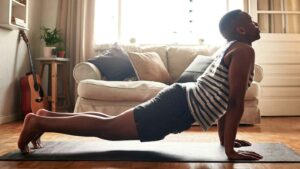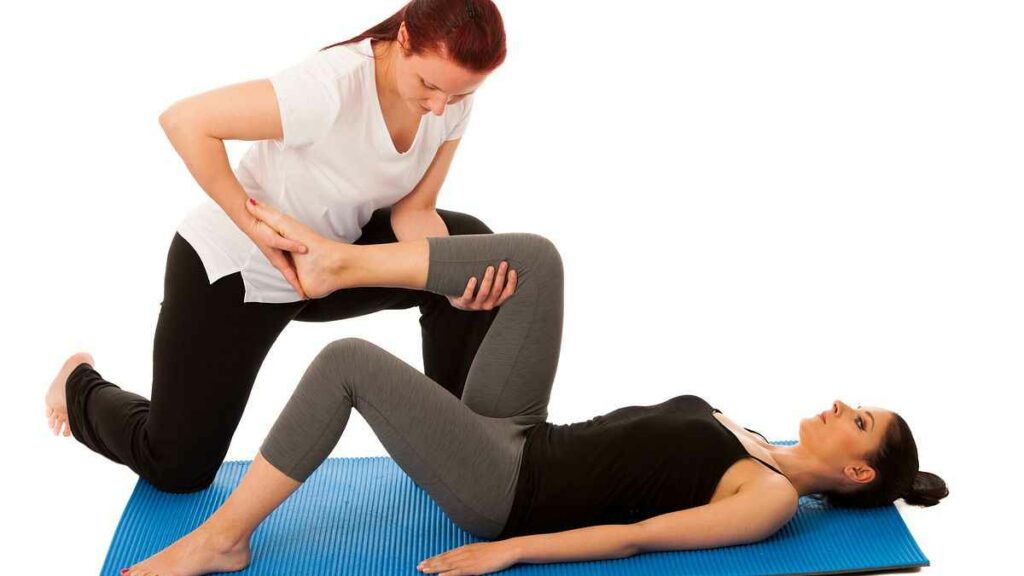If you are suffering from lower back pain, you may be wondering what your best option is for treatment. You could try medication, but physical therapy has been shown to be more effective in the long run. In this blog post, we will discuss the benefits of physical therapy and why it is the best option for treating lower back pain.
Contents
Understanding Physical Therapy

Physical therapy, also called physiotherapy, is a healthcare profession that provides services to individuals and populations to develop, maintain and restore maximum movement and functional ability throughout the lifespan. This includes providing treatment in circumstances where movement and function are threatened by injury, pain, or disability as well as in order to prevent the onset or progression of such impairments and disabilities.
When it comes to finding relief from lower back pain, there are many options available. However, not all of these options are created equal. In fact, some treatments can actually make your pain worse instead of better. That’s why it’s important to choose a treatment option that is both effective and safe.
Types Of Lower Back Pain That Benefit From Physical therapy

There are various types of lower back pain that can benefit from physical therapy. they are as follows:
1. Mechanical back pain is one of the most common types of lower back pain and it is often caused by incorrect posture or overuse of muscles. Physical therapy can help to relieve this type of pain by improving your posture and teaching you exercises to strengthen the muscles in your back.
2. Radicular back pain is a type of nerve pain that radiates from your lower back down your legs. This can be caused by a herniated disc or spinal stenosis (narrowing of the spinal canal). Physical therapy can help to relieve this type of pain by stretching and strengthening the muscles in your back, as well as by providing exercises to improve your flexibility.
3. Spinal stenosis back pain is caused by the narrowing of the spinal canal, which can put pressure on the nerves. Physical therapy can help to relieve this type of pain by stretching and strengthening the muscles in your back, as well as by providing exercises to improve your flexibility.
4. Degenerative disc disease back pain is caused by the deterioration of the discs in your spine. Physical therapy can help to relieve this type of pain by strengthening the muscles in your back and providing exercises to improve your flexibility.
5. Sacroiliac joint dysfunction back pain is caused by the inflammation of the sacroiliac joint, which is located between the hip and spine. Physical therapy can help to relieve this type of pain by stretching and strengthening the muscles in your back and providing exercises to improve your flexibility.
6. Post-operative lower back pain is often caused by the surgery itself or by the scar tissue that forms after surgery. Physical therapy can help to relieve this type of pain by stretching and strengthening the muscles in your back, as well as by providing exercises to improve your flexibility.
Does Physical Therapy Works For Lower back pain?
There is no one-size-fits-all answer to this question, as the effectiveness of physical therapy for lower back pain depends on a variety of individual factors. However, many people do find that physical therapy can be helpful in managing their lower back pain.
When you experience lower back pain, it can be easy to remain inactive on the couch all day. Although this might provide temporary relief, in the long run, this will likely cause more pain. Physical therapy and exercise are often the best solutions to reduce pain, even though they may be the last thing you want to do when you’re feeling discomfort.
What physical therapy exercises help lower back pain?

The various physical therapy exercises are as follows:
Spine stabilization exercises
These exercises help in strengthening the muscles that support the spine and provide stability to it. This, in turn, helps in reducing pain and preventing further injury. For example, the bird dog exercise is a spine stabilization exercise that helps in strengthening the core muscles.
Bird Dog exercise: Start on all fours with your hands shoulder-width apart and your knees hip-width apart. Keep your spine in a neutral position, and engage your core muscles.
- Slowly lift your right arm and left leg off the ground, extending them straight out from your body.
- Hold this position for 5 seconds, then return to the starting position.
- Repeat with your left arm and right leg.
- Do 2-3 sets of 8-12 repetitions.
Pelvic Tilts: Lie on your back on the floor with your knees bent and your feet flat on the ground. Place your hand on your stomach.
- As you exhale, use your abs to slowly tuck your tailbone under and flatten your lower back against the floor.
- Hold this position for 5 seconds.
- As you inhale, return to the starting position.
- Do 2-3 sets of 8-12 repetitions.
Superman exercise: Lie face down on the floor with your legs extended straight behind you and your arms extended straight in front of you.
- Engage your core muscles and slowly lift your arms and legs off the ground.
- Hold this position for 5 seconds, then return to the starting position.
- Do 2-3 sets of 8-12 repetitions.
Flexibility and range of motion exercises
These exercises help improve flexibility and range of motion of the spine, thereby reducing pain. examples include:
- Hamstring stretch: Lie on your back with one leg straight and the other bent at the knee. Keeping your back flat on the floor, raise your bent leg up towards your chest. Hold for 30 seconds and repeat 3 times.
- Gluteal stretch: Lie on your back with one leg bent at the knee and the other leg straight. Pull your bent knee across your body towards the opposite shoulder. Hold for 30 seconds and repeat 3 times.
- Piriformis stretch: Lie on your back with both legs bent at the knees. Cross one leg over the other so that the ankle is resting on the opposite knee. Gently pull the crossed leg towards your chest. Hold for 30 seconds and repeat 3 times.
- Quadriceps stretch: Lie on your stomach with one hand on the floor for support. Bend one leg back and grab the ankle with the opposite hand. Gently pull the heel towards your buttocks. Hold for 30 seconds and repeat 3 times.
- Calf stretch: Stand with one foot in front of the other, keeping your feet about shoulder-width apart. Bend your front leg at the knee and lean forward, keeping your back leg straight. You should feel a stretch in the back of your calf. Hold for 30 seconds and repeat 3 times.
Strengthening exercises
These exercises help in strengthening the muscles supporting the spine, which helps in reducing pain and improving function. For example, doing a squat with a weight in your hands can help improve the strength of your lower back muscles. These exercises help to strengthen the muscles that support the spine, thereby reducing pain. examples include:
- Leg press: Sit in a chair with your back against the backrest and your feet flat on the floor. Place your hands on your thighs or crossed in front of your chest. Slowly press your knees outward against resistance. Return to the starting position and repeat 10 times.
- Leg extension: Sit on the edge of a chair with your feet hanging off and a rolled-up towel under your knees. Slowly raise your legs up as high as you can without pain, then lower them back down. Repeat 10 times. Hip abduction: Lie on your side with your affected leg on top. Keeping your foot flexed, slowly raise.
- Seated row machine: This is a great exercise for working your lower back muscles. To do this exercise, sit on the machine with your feet firmly planted on the footrests. Grasp the handles with your hands and pull them towards you, keeping your back straight. You can use different settings on the seated row machine to target different areas of your lower back.
- Lat pull-down machine: One of the best machines you can use for lower back pain is the lat pull-down machine. This machine works by strengthening the muscles in your back, which can help to take the pressure off of your spine and alleviate pain. Start by sitting on the machine with your knees bent and your feet flat on the floor. Then, grasp the bar with an overhand grip and pull it down to your chest. Slowly return the bar to the starting position and repeat.
Aerobic conditioning
This helps in improving overall fitness and reducing pain. For example, walking, bicycling, and swimming.
For example, walking, bicycling, and swimming is all excellent exercises for people with lower back pain. These activities help to strengthen the muscles around the spine and can also help to increase flexibility. Additionally, aerobic exercise can help to improve mental health by reducing stress and anxiety.
Other exercises
Weight lifting: This is another form of exercise that can help to reduce lower back pain. Weight lifting helps to build muscle strength and can also help to increase flexibility. Additionally, weightlifting can help to improve mental health by reducing stress and anxiety.
Yoga: Yoga is a great way to reduce stress and improve flexibility. Yoga can also help to improve mental health by reducing stress and anxiety.
Thus these are some physical therapy exercises that can be done for lower back pain.
How Does Physical Therapy Help In Lower Back Pain?
One of the most common reasons people visits the doctor is because of back pain. In fact, according to the National Institutes of Health, approximately 80 percent of adults experience low back pain at some point in their lives. And while there are many potential causes of back pain, such as muscle strain, arthritis, and disc problems, one of the most effective treatments for relieving lower back pain is physical therapy.
Physical therapy helps in the lower back in no. of ways. It can help to:
Reduce pain and inflammation: Physical therapy can help to reduce the pain and inflammation associated with lower back problems. This is often done through the use of heat or cold therapy, as well as electrical Stimulation.
Increase flexibility and range of motion: Physical therapy can also help to increase the flexibility and range of motion in the lower back. This is important because it can help to prevent further injury and also improve the function of the affected area.
Strengthen muscles: Physical therapy can also help to strengthen the muscles in the lower back. This is important because strong muscles can help to support the spine and prevent further injury.
Improve posture: Poor posture is often a contributing factor to lower back pain. Physical therapy can help to improve posture and alleviate some of the pressure on the spine.
Overall, physical therapy is an effective treatment for lower back pain. If you are experiencing back pain, be sure to talk to your doctor about whether physical therapy may be right for you.
Conclusion
It may be concluded that physical therapy for lower back pain can be beneficial for some people. However, as with any treatment, there are potential risks and side effects that should be considered before starting physical therapy. These risks and side effects should be discussed with a qualified healthcare professional to determine if physical therapy is right for you.
Physical Therapy help patients recover from pain. If you’re experiencing Back pain, Shoulder pain, Knee pain, Neck pain, Elbow pain, Hip pain, or Arthritis pain, a physical therapist at MantraCare can help: Book a physiotherapy session.


